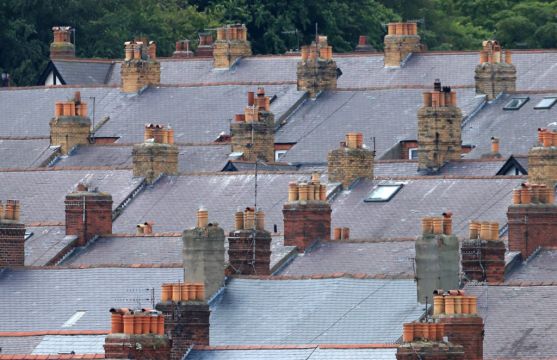Ireland once again has the highest mortgage rates in the Eurozone, according to new data from the Central Bank of Ireland, adding thousands in a year to the cost of living.
At 2.69 per cent in December, the average interest rate on a new mortgage in Ireland is the highest in the 19-country Eurozone, and more than double the Eurozone average of 1.29 per cent.
This is despite mortgage rates currently at record lows in the country, with the average interest rate down 0.10 per cent compared to February of last year.
The average first-time buyer mortgage in Ireland is around €262,000, according to the Banking and Payments Federation Ireland (BPFI) in December. This means someone borrowing this amount over 30 years is paying almost €180 extra a month, or over €2,100 a year, compared to their European neighbours.
For the highest rates in the Eurozone, Ireland is followed by Greece at 2.55 per cent and Latvia at 2.26 per cent. Finland has the lowest average rates in the Eurozone at just 0.77 per cent, closely followed by Portugal at 0.82 per cent.
Higher mortgage rates add hugely to the cost of living in Ireland, which as we know is already extremely high compared to the rest of Europe
“The fall in mortgage rates over the past year is obviously welcome and the overall trend is downward, albeit very slowly. However it’s still deeply frustrating that rates here remain so high compared to our Eurozone neighbours,” said Daragh Cassidy of comparison website bonkers.ie.
“Higher mortgage rates add hugely to the cost of living in Ireland, which as we know is already extremely high compared to the rest of Europe. According to Eurostat, Irish housing costs such as rent, mortgage rates, gas and electricity are a staggering 78 per cent above the European average.”
Mr Cassidy urged first-time buyers to “shop around and consider all mortgage lenders,” saying smaller or newer lenders are offering some of the best value right now. He urged those who already have a mortgage to consider switching.
Interest rate hikes
Trevor Grant, chairperson of the Association of Irish Mortgage Advisors (AIMA), said the “looming threat of interest rate hikes draws ever closer.”
“At a weighted average of 2.69 per cent, rates in Ireland overall are still too high, but more and more lenders are now lowering their fixed rate offerings in response to competition being driven by non-bank lenders,” he said.
“Mortgage holders are moving in their droves to fixed rates as evidenced by the fact that they account for 84 per cent of new agreements in the last month of 2021.
“It looks likely that this will continue into 2022 and beyond, as the looming threat of interest rate hikes draws ever closer.
“It is fair to say that it is most likely not a case of whether interest rates will rise but rather, when they will rise, though this may not be until the end of 2022 or early 2023.”
Interest rates are now as low as they are likely to be for some time, Mr Grant said. “With this in mind, and with some form of increase likely to be on the way, mortgage holders should be asking themselves how they might deal with any such future increases.”







